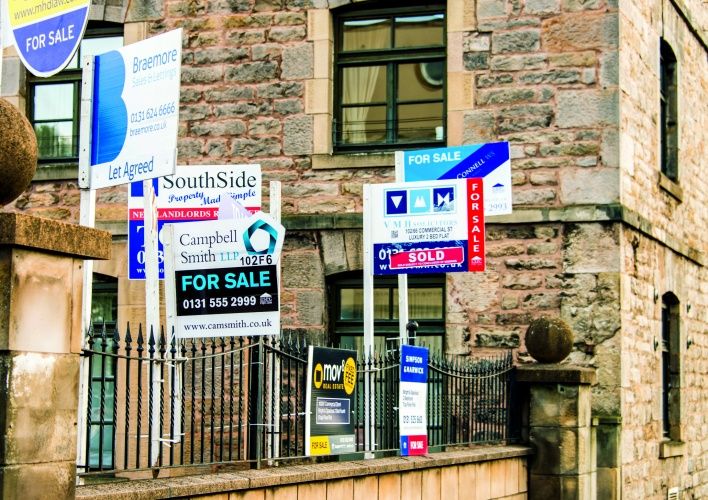
Last month, Rightmove reported that rents in London had fallen 0.6 per cent in the year and 2.8 per cent in the past quarter, in part thanks to a 41 per cent rise in available stock on an annual basis.
Separately, the Association of Residential Letting Agents reported that the lowest number of rent increases since 2016 had occurred in June, with 29 per cent of estate agents reporting a rise. In June 2019 the figure was 60 per cent.
Speculation is cheap, but if 2020 has taught us all anything it is that businesses must be quick to adapt to changing circumstances – and that includes landlords based in the capital.
There are several incoming factors to consider. The first is the looming eviction issue. Recent clarification of the extension to the eviction ban stated that the previous rule – that tenants needed to have built a year’s worth of arrears before action could be taken – had changed to six months, which allayed some concerns.
But the NRLA wants to see more. Chief executive Ben Beadle says: “[The clarification] will mean nothing without a complete guarantee that the courts will hear cases from 20 September.”
He adds: “It is disappointing that the government has so far failed to heed the warnings of the NRLA and others that a financial package is needed to pay off rent arrears built due to Covid. In the end, this is the best way to sustain tenancies.”
The Scottish government recently announced the provision of interest-free hardship loans.
Private Finance mortgage consultant Chris Sykes points out that evictions that go ahead during the global pandemic “will see a great deal of negative publicity – ultimately we believe this will put off new entrants to the [buy-to-let] market”.
The second factor is that BTL mortgage rates are rising. Moneyfacts data shows that, between 1 August and 1 September this year, the average BTL two-year fixed rate at all LTVs grew from 2.66 per cent to 2.84 per cent, and for a five-year fix it rose from 3.06 per cent to 3.20 per cent.
Mortgages for Business sales director Jeni Browne says: “The increase in pricing among the more vanilla lenders is really just a readjustment.
“The specialist lenders have increased their pricing in a bid to manage business volumes as they manoeuvred their way through lockdown but I expect they have wriggle room to bring rates down a little but also continue to manage their SLAs in the month ahead.
“It is also worth noting,” she continues, “that only 15 per cent to 20 per cent of mortgages are taken on two-year fixed rates, with the majority of the difference being taken on five-year fixed rates.”
Added to this is the fact that, at the end of August, rumours began to swirl that the government would be increasing the capital gains tax rate from 28 per cent to 45 per cent in November’s Budget.
One lender, which wishes to remain anonymous, believes that all the factors brought on by the pandemic “will accelerate the professionalisation of the sector”, adding that its research shows landlords have an appetite to buy.
“Mooted tax changes,” the lender continues, “could lead to an increase in incorporation, which again is utilised more by professional landlords.”
National Residential Landlords Association deputy director for policy and research John Stewart comments: “We envisage [a CGT rise] trapping landlords wanting to leave the market for longer than they might have intended.
“It would be much better to use the tax more wisely to support the sale of properties with tenants in situ or to sell to first-time buyers.”
In its Summer 2020 London residential property market report, estate agent and lettings manager Chestertons gives a gloomy forecast: “Average rents across Greater London will fall by 8 per cent to 10 per cent in 2020 and by 3 per cent to 5 per cent in 2021,” it says.
It adds: “However, in those locations where supply and demand becomes balanced more quickly, we could see a return to moderate growth next year.”
Chestertons goes even further when talking about higher-value locations, where it foresees rent falling by 10 per cent to 12 per cent in 2020 and by 2 per cent to 5 per cent in 2021.
The sector is ready, however, according to the aforementioned anonymous lender. It says: “Many landlords see their BTL properties as long-term investments and have built robust businesses able to manoeuvre in line with market conditions.
“Professional landlords benefit from a portfolio approach and have the ability to absorb losses from individual properties. Landlords we speak to are aware of the challenges they may face and are preparing their businesses accordingly.
“The strength of the sector is multi-faceted and demand for rented property tends to rise during times of economic uncertainty. There are also long-term fundamentals that underpin demand for rented accommodation.
“The need for a strong, robust private rented sector remains today, and will do for years to come.”



